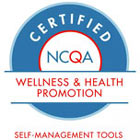Understanding Healthcare
How Men’s Health Needs Change Through the Years

April 2022
Men often feel invincible. So, they engage in risky behaviors and put off routine care. But your greatest superpower is taking charge of your well-being.
Here’s how to get started, no matter how old you are.
Your 20s
Quit smoking—better yet, don’t start. Limit alcohol to 2 drinks per day. Fuel your mind and body with fruits and vegetables, plenty of protein, and healthy fats from nuts and olive oil.
Visit your primary care provider for yearly checkups. There, you’ll get screened for high blood pressure, cholesterol, and sexually transmitted infections. Stay safe by avoiding distracted driving, using contraception, getting a yearly flu shot, and wearing a bike helmet.
Your 30s
Keep your body active by aiming for 150 minutes of moderate aerobic exercise and two or more muscle-strengthening sessions weekly. Continue eating a heart-healthy diet low in saturated and trans fats.
If you haven’t already, gather your family history of cancer, heart disease, and other conditions. Share this information with your healthcare provider.
Your 40s
Between finances, work, and family, men face many pressures. Save time to unwind and connect with others. If you feel overwhelmed or hopeless, talk with your healthcare provider.
Also ask about screenings for diabetes and some cancers, including colorectal and prostate. Tests can find these diseases early when they’re easier to treat. The best schedule depends on your personal and family health history.
Your 50s
Continue the conversation about screenings. You might need to add tests for hepatitis C and lung cancer to your schedule.
Also ask your healthcare provider about vaccines. In addition to flu and COVID-19 vaccines, get one for shingles, a virus that causes a painful rash.
Your 60s and beyond
Continue regular checkups. Follow your provider’s guidance on screenings, and on treatments for existing health conditions. Once you reach 65, get shots for pneumonia.
It’s never too late to make healthy changes. If you can’t get 150 minutes of exercise per week, any amount of movement helps. So does a diet rich in fruits and vegetables, whole grains, nutrient-rich proteins, and healthy fats.
Featured in


